If you’ve ever admired the captivating beauty of hibiscus blossoms, then why not bring their vibrant colours and lush foliage into your own backyard? A hibiscus garden can transform any outdoor space into a gorgeous oasis that will have all your neighbours and friends asking for more details – plus it’s surprisingly easy to create!
In this blog post, we’ll give you some fantastic ideas on how to plan and start a hibiscus garden in no time. From soil requirements to best varieties, get ready to learn everything there is to know about these stunning blooms.
So let’s dive right in and explore the possibilities of bringing beautiful hibiscus plants into your life!
How To Choose Companion Plants For Hibiscus
When it comes to choosing companion plants for hibiscus, the first thing you need to do is consider the light requirements of each species. For example, some hibiscus varieties prefer full sun while others are more tolerant of part-shade. This will determine which other flowers and foliage would be suitable companions.
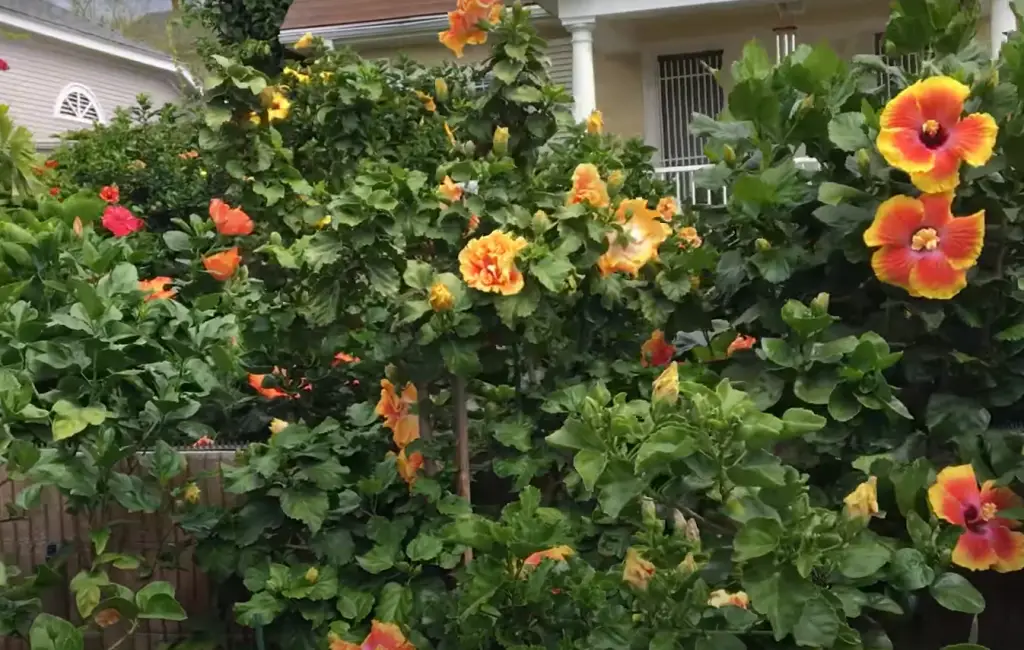
In general, the best companions for hibiscus are plants that have similar growing conditions (such as light and soil).
By carefully selecting companion plants with complimentary colours and habits, you’ll create a stunning display of contrasting foliage and blooms. Some great options include roses, azaleas, coreopsis, lantanas, canna lilies, and salvias.
Stunning Groundcover Hibiscus Companion Plants
Sweet alyssum (Lobularia)
This hardy, low-growing annual is a great groundcover for hibiscus plants. It produces masses of small white or pink blooms that attract beneficial insects and fill in any bare spots in your garden.
Sweet alyssum also has a mild scent which will add an extra layer of fragrance throughout the season.
Ornamental sweet potato vine (Ipomoea)
Another great groundcover for hibiscus gardens is the ornamental sweet potato vine. This fast-growing annual produces vibrant purple and green foliage that will add a unique texture to your garden beds.
Sweet potato vines are also drought-tolerant, making them ideal for hot summer months.
Petite delight bee balm (Monarda)
For a unique, low-growing companion plant to your hibiscus, consider the petite delight bee balm. This perennial produces small clusters of pink or white blooms and has a delightful citrus scent when in bloom.
It also attracts pollinators to your garden like bees and butterflies – making it an ideal choice for attracting beneficial wildlife.
Hardy Hibiscus Companion Plants
Peonies (Paeonia)
For a stunning colour contrast, pair your hibiscus with peonies.
Plus, their large leaves provide an interesting foliage contrast to any garden bed.Veronica
For a bright blue-purple splash in your garden, look no further than veronica. These hardy perennials thrive in full sun and are known for their upright spires of bell-shaped blooms that attract pollinators like bees and butterflies.
Cranesbill geraniums (Geranium)
Cranesbill geraniums are a great choice for hibiscus companion plants. These low-growing perennials produce masses of stunning saucer-shaped blooms in shades of pink, purple and white that will contrast beautifully with the vibrant colours of your hibiscus flowers.
What Not To Plant With Hibiscus
It’s important to note that there are some plants that should not be planted with hibiscus. These include invasive species such as kudzu, bamboo, and English ivy.
Additionally, avoid planting any plants that require excessive water or too much shade as they can compete with your hibiscus for resources.
Hibiscus Garden Ideas
Along patios, gateways, and courtyards
Hibiscus plants are great for creating a stunning display along patios, gateways and courtyards.

This can be achieved by planting them in large pots or installing raised garden beds that are filled with rich soil and compost. For an added touch of beauty, incorporate trailing vines and annuals to create a cascading effect.
Containers
Hibiscus plants can also be planted in containers and pots. This is a great option for those with limited garden space or to bring the beauty of hibiscus to an outdoor porch or balcony.
When planting hibiscus in containers, make sure to use good-quality potting soil and place them in a spot that receives at least 6 hours of direct sunlight.
Borders
Hibiscus plants are also great for creating a stunning border around your garden or along walkways.
For an added touch, add some colourful annuals or creeping groundcover between the hibiscus plants to fill in any gaps.
Natural screens and hedges
Hibiscus plants can also be used to create natural screens and hedges. By planting them in tight rows, they can help to block out unwanted noise or provide extra privacy for your outdoor space.
Plus, the vibrant colours of the hibiscus blooms will add an extra layer of beauty and charm to any garden.
Attract wildlife
Hibiscus plants are great for attracting beneficial wildlife such as bees, butterflies and hummingbirds. To do this, incorporate some companion plants into your hibiscus garden that will provide nectar and pollen for these pollinators. Good choices include bee balm, peonies, veronica, and cranesbill geraniums.
Useful Tips For Planting Hibiscus
When planting your hibiscus, make sure to choose a location that receives at least 6 hours of direct sunlight. Also, be sure to add plenty of compost and organic matter to the soil before planting as this will help to ensure optimal drainage.
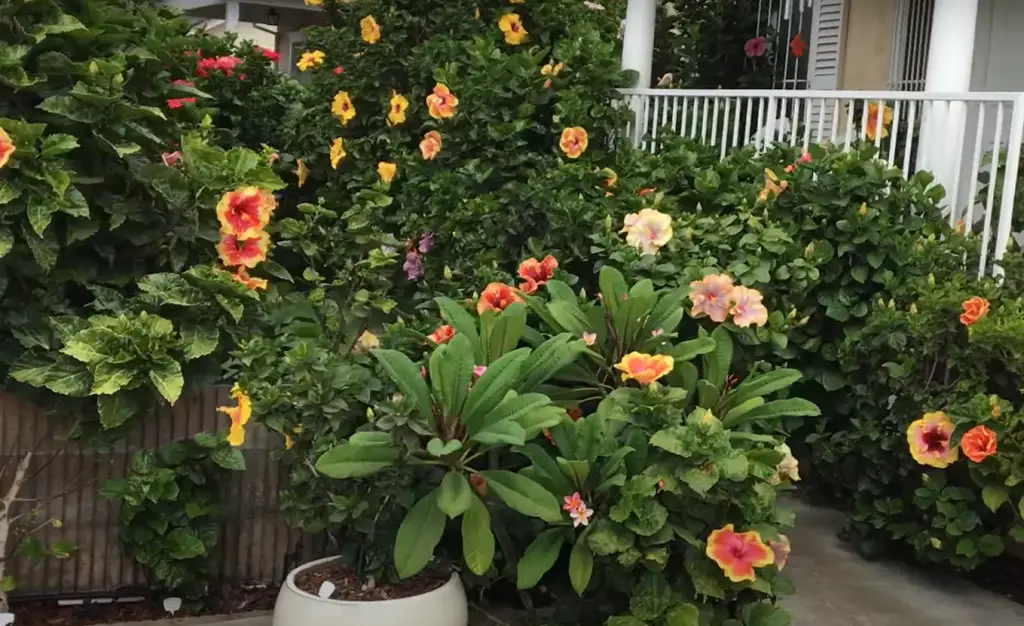
Additionally, it’s important to water your plants regularly – especially during dry spells or hot summer months. Finally, in order to keep your hibiscus plants healthy and pest-free, routine pruning and deadheading of spent blooms is recommended.
FAQ
What plant goes well with hibiscus?
Veronica, cranesbill geraniums, bee balm, peonies, and other flowering annuals are great companion plants for hibiscus.
These will provide a contrasting colour to the vibrant hibiscus blooms and also help attract beneficial wildlife such as bees and butterflies.
How do I care for my hibiscus plants?
In order to keep your hibiscus plants healthy, it’s important to provide them with plenty of direct sunlight, water regularly (especially during dry spells or hot summer months), and add plenty of compost and organic matter to the soil before planting. Additionally, routine pruning and deadheading of spent blooms is recommended.
What should I avoid planting with hibiscus?
In general, it’s best to avoid planting any plants that require excessive water or too much shade as they can compete with your hibiscus for resources. Additionally, steer clear of invasive species such as kudzu, bamboo, and English ivy.
Where is the best place to plant hibiscus?
The best place to plant your hibiscus is in an area that receives at least 6 hours of direct sunlight each day. Additionally, make sure to choose a location with good drainage and plenty of room for growth.
Finally, consider incorporating companion plants into your hibiscus garden to attract beneficial wildlife such as bees and butterflies.
Where is the best place to plant hibiscus?
The best place to plant your hibiscus is in an area that receives at least 6 hours of direct sunlight each day.
Additionally, make sure to choose a location with good drainage and plenty of room for growth. Finally, consider incorporating companion plants into your hibiscus garden to attract beneficial wildlife such as bees and butterflies.
Additionally, take the time to research any local ordinances regarding planting and cultivating hibiscus in your area. This will ensure you don’t run into any legal issues when it comes to adding these vibrant plants to your outdoor space.
How do you use hibiscus in the landscape?
Hibiscus can be used in a variety of ways in the landscape. They make stunning focal points when planted solo or they can be used to create natural screens and hedges when planted in tight rows.
Additionally, they’re great for attracting beneficial wildlife such as bees, hummingbirds, and butterflies so consider incorporating some companion plants into your hibiscus garden to provide nectar and pollen for these pollinators. Finally, they can be used to create a vibrant backdrop in containers or window boxes.
What other plants go with hibiscus?
In addition to veronica, cranesbill geraniums, bee balm, and peonies, some other great companion plants for hibiscus include daylilies, cleome, asters, black-eyed Susan, coreopsis, and Mexican sunflowers.
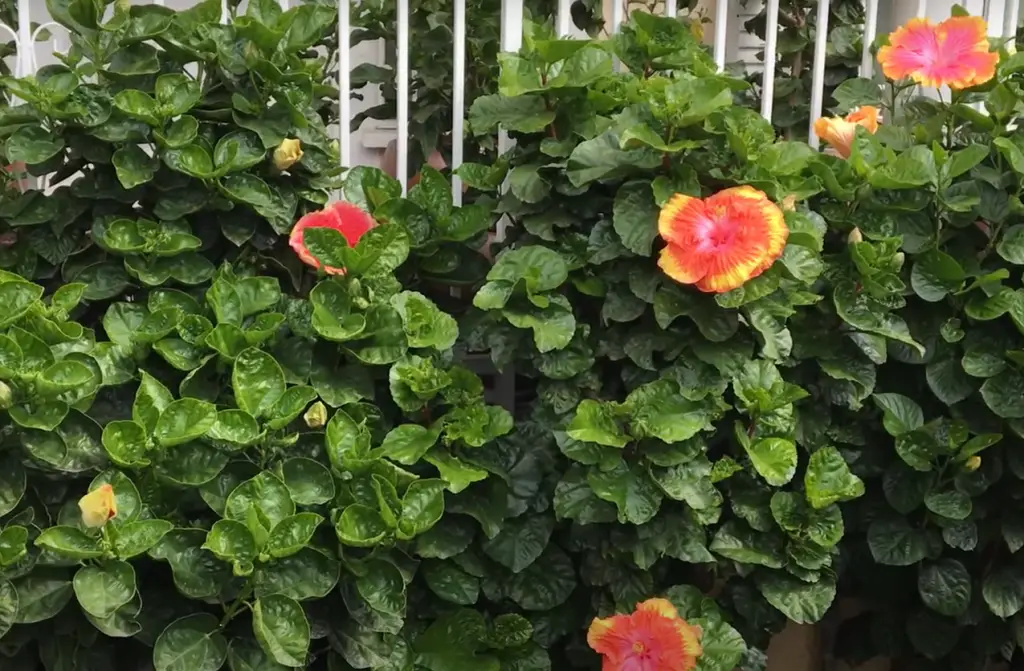
These will provide a contrasting colour to the vibrant hibiscus blooms and also help attract beneficial wildlife such as bees and butterflies.
Should hibiscus be in the ground or planter?
Typically, hibiscus plants should be planted in the ground. This will give them plenty of space for growth and access to necessary nutrients and water.
However, if you don’t have enough room or prefer a more mobile approach, you can also plant your hibiscus in containers or window boxes as long as they get enough sunlight and space for growth.
Additionally, make sure to use a soil-based container mix that’s rich in organic matter and drains well.
What other tips do you have for growing hibiscus?
When it comes to growing hibiscus, here are some final tips: Make sure the location you choose gets at least 6 hours of direct sunlight each day, water regularly (especially during dry spells or hot summer months), and add plenty of compost and organic matter to the soil before planting.
Additionally, routine pruning and deadheading of spent blooms is recommended to keep your plants healthy. Finally, consider incorporating some companion plants into your hibiscus garden to attract beneficial wildlife such as bees and butterflies. With the right care, your hibiscus plants should thrive for years to come!
What do coffee grounds do for hibiscus?
Coffee grounds are a great source of slow-release nitrogen and can help nourish your hibiscus plants. To use, simply spread a thin layer of coffee grounds around the base of your hibiscus plants and lightly water in.
The extra nitrogen will not only help promote growth but also help reduce any yellowing or discoloration of foliage.
Additionally, coffee grounds can help reduce pests such as aphids and ants, making them a great natural pest control method. However, avoid using too much as this can lead to an overload of nitrogen in the soil which can be harmful to your plants.
What pests can affect hibiscus?
Like any plant, hibiscus can be affected by a variety of pests. Common culprits include aphids, spider mites, mealybugs, and thrips. Additionally, ants and scale can also become an issue for hibiscus plants so it’s important to regularly inspect your plants for any signs of infestation.
If you spot pests, it’s important to act quickly and use natural methods such as spraying with neem oil or introducing beneficial insects to help keep them in check.
Why do hibiscus leaves get brown spots?
Brown spots on hibiscus leaves are typically caused by bacteria or fungal infections. These can be caused by insufficient drainage, too much water or fertiliser, or even a lack of sunlight.
To help prevent this, make sure your plants have plenty of access to sunlight and that the soil drains well. Additionally, avoid over watering or overfertilizing as this can lead to an environment that’s ripe for infection.
Why do hibiscus leaves curl?
Leaf curling is another common issue that can affect hibiscus plants. This is typically caused by environmental factors such as too much or too little water, lack of sunlight, or low temperatures.
To help prevent this, make sure your plants receive adequate sunlight and water as well as enough nutrients from the soil. Additionally, during periods of extreme heat or cold, be sure to protect your plants with a cover or move them indoors if possible.
How can I tell if my hibiscus plant is in distress?
If your hibiscus plant is in distress, there are a few signs to look out for. These include yellowing or discoloured foliage, wilting of the leaves or stems, and stunted growth.
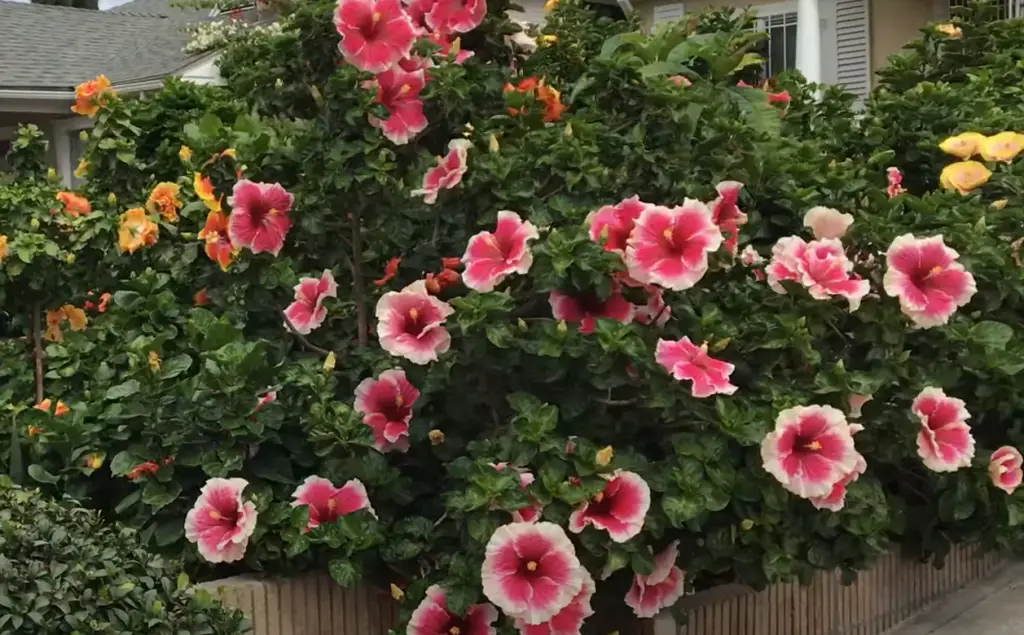
Additionally, a lack of blooms may also be an indication of a distressed plant. If you notice any of these symptoms, it’s important to act quickly and identify the root cause (such as pests, lack of sunlight or water) in order to get your plants back on track.
How often should hibiscus be fertilised?
In general, it’s best to fertilise your hibiscus plants every few weeks during the growing season. However, this can vary depending on the type of fertiliser you use and the soil conditions.
To ensure your plants have access to all of the nutrients they need, consider using a slow-release fertiliser such as one made for hibiscus. Additionally, regular applications of compost or other natural fertilisers can also help nourish your plants and keep them healthy.
Does hibiscus need pruning?
Yes, regular pruning is recommended for hibiscus plants. Pruning helps encourage new growth and keeps your plants looking tidy. Additionally, it can also help reduce the spread of pests or diseases that may be present on the plant.
When pruning, make sure to use clean and sharp tools as this will help reduce any damage to the plant. Additionally, avoid over-pruning as this can lead to stunted growth and a lack of blooms.
Does hibiscus need to be staked?
In most cases, staking is not necessary for hibiscus plants.
This could be in the form of stakes or other supports such as trellises or cages. Additionally, be sure to use material that’s soft and won’t damage the stems or foliage of your plants.
Does hibiscus attract birds and other wildlife?
Yes, hibiscus can be a great addition to any garden as it does attract birds and other wildlife. The vivid colours of the blooms are particularly attractive to hummingbirds, butterflies, and bees.
Additionally, the foliage is also often a favourite of many different types of beneficial insects such as ladybugs and green lacewings, which help keep pests in check.
To further attract wildlife to your garden, consider adding a birdbath or feeder as well as some native plants that are known to attract beneficial insects.
Do hibiscus need a lot of maintenance?
No, hibiscus plants don’t require a lot of maintenance. As long as you provide your plants with the right environment and care, they should stay healthy and vibrant.
Additionally, regular pruning, fertilising, and watering can help keep your plants looking their best. Just be sure to check on your plants regularly and address any issues as soon as possible.
Does hibiscus need to be deadheaded?
Yes, regular deadheading of hibiscus plants is recommended. Deadheading helps promote new blooms and can also help keep the plant looking tidy. When deadheading, be sure to use clean and sharp tools and avoid damaging the stems or foliage.
Additionally, make sure to remove spent blooms and their stems to the base of the plant, not just the top.
Does hibiscus need to be protected from frost?
Yes, it’s important to protect your hibiscus plants from frost. Hibiscus are tropical and subtropical plants that can’t tolerate cold temperatures. If you live in an area with heavy frosts, consider bringing your plants indoors or covering them with a frost cloth during the coldest months of the year.
Additionally, be sure to check on your plants regularly and address any issues as soon as possible.
Do hibiscus need to be watered often?
Yes, hibiscus plants require regular watering. During the growing season, it’s important to keep the soil evenly moist but not soggy. Additionally, water your plants deeply and allow the top inch of soil to dry out between waterings. Be sure to avoid over-watering as this can lead to root rot and other issues.
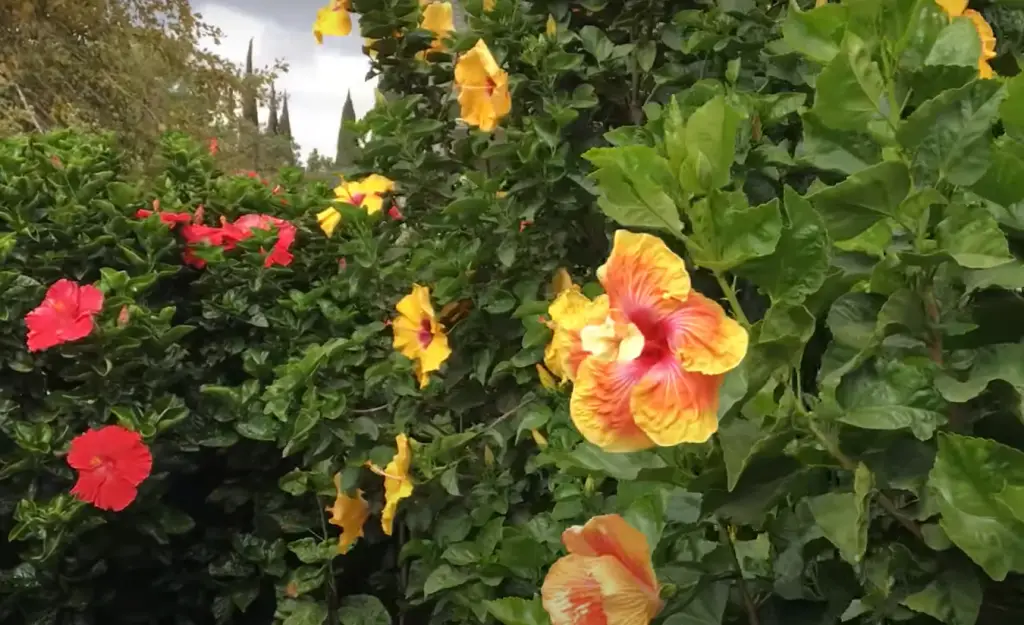
Additionally, during the winter months, reduce watering significantly and only water when the top few inches of soil are dry.
Do hibiscus need direct sunlight?
Yes, hibiscus plants do best in full sun or at least six hours of sunlight per day. However, if you live in an area experiencing extreme heat or direct sunlight, you may need to provide some protection from the sun’s rays.
Consider planting your hibiscus in a partially shaded area or providing shade cloth during the warmest parts of the day. Additionally, be sure to check on your plants regularly and address any issues as soon as possible.
Do hibiscus need fertiliser?
Yes, regular fertilising is recommended for hibiscus plants. During the growing season, use a balanced liquid or slow-release fertilizer to provide your plants with the nutrients they need to grow and bloom.
Additionally, be sure to follow the instructions on the fertilizer package and adjust the amount of fertilizer accordingly.
Also, consider using a soil test kit to make sure your plants are getting all the nutrients they need. Lastly, be sure to check on your plants regularly and address any issues as soon as possible.
Does hibiscus need to be mulched?
Yes, mulching is recommended for hibiscus plants. Mulch helps protect the roots and soil from extreme temperatures as well as helps retain moisture in the soil. Additionally, it can help keep weeds down and provide your plants with added nutrients.
Be sure to use a lightweight organic material such as wood chips, pine needles, or straw. Additionally, be sure to check on your plants regularly and address any issues as soon as possible.
What other elements should I consider adding to my hibiscus garden?
In addition to regular maintenance and care for your hibiscus plants, you can also add a few additional elements to your garden.
Consider planting companion plants such as annuals, perennials, and herbs that will help enhance the look of your hibiscus garden. Additionally, birdbaths, trellises, and other decorative items can add a unique touch to your landscape.
Lastly, be sure to check on your plants regularly and address any issues as soon as possible.
Useful Video: Exotic Hibiscus Landscaping
Conclusion
With all of these ideas for how to bring the beauty of hibiscus into your own garden, we hope that you have been inspired to get started in creating a one-of-a-kind outdoor area.
Whether you decide to go with a tropical theme or simply accents here and there, you can be sure that whatever you choose will make your space more inviting and beautiful.
Plus, with such bright leaves and flowers, not even the rainiest days can put a damper on your outdoor plans!
We are so excited to see what different looks people come up with, so don’t forget to share photos of your hibiscus garden once it is complete. The possibilities are truly endless, so have fun getting creative! Happy gardening!





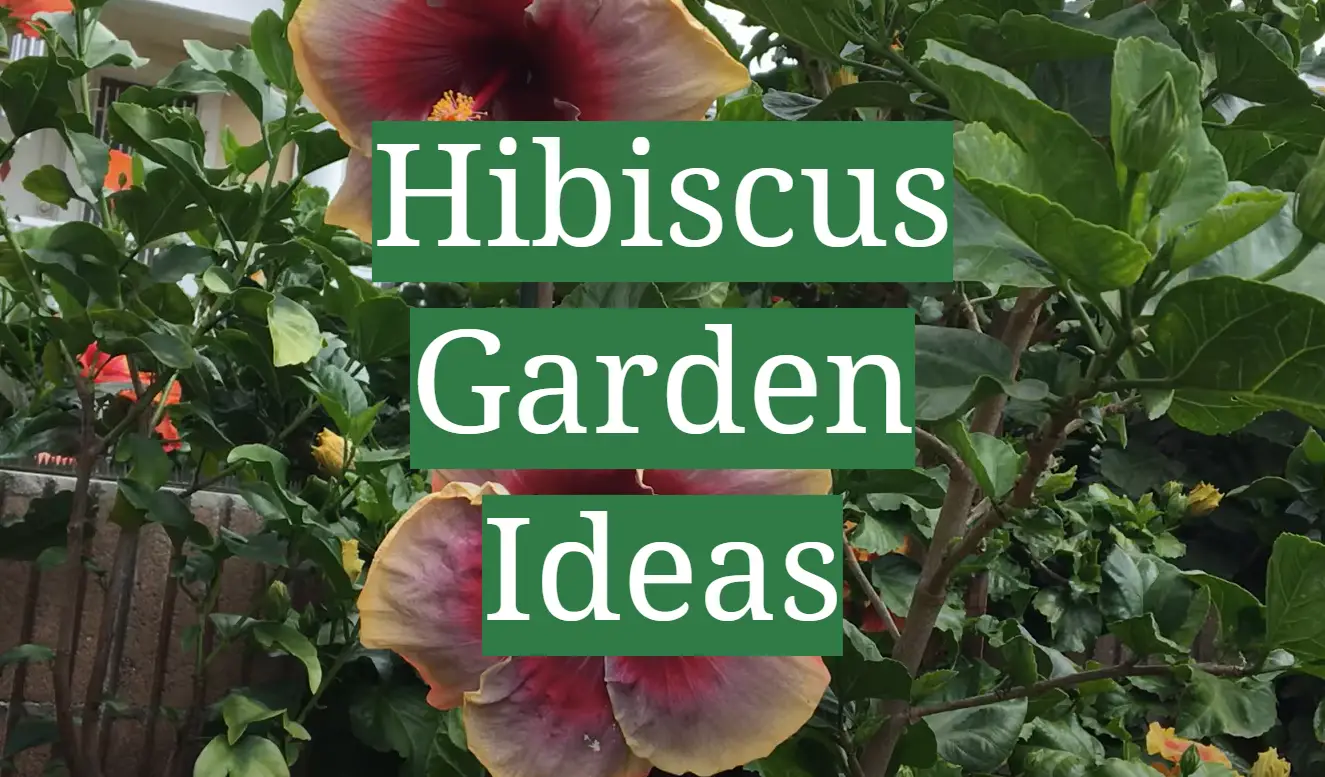




Leave a Reply
View Comments